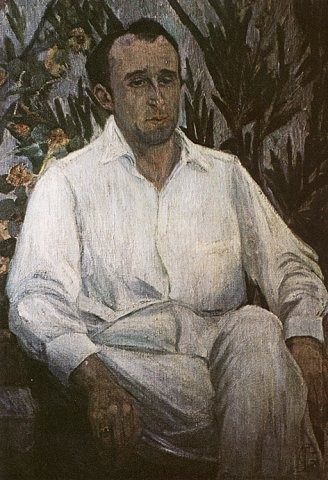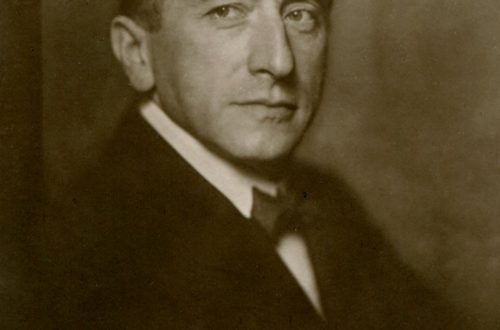
Frederick Delius (Dilius) (Frederick Delius) |
Frederick Delius

He did not receive a professional musical education. As a child, he learned to play the violin. In 1884 he left for the USA, where he worked on orange plantations, continued to study music on his own, took lessons from the local organist T. F. Ward. He studied Negro folklore, including spirituals, the intonations of which were used in the symphonic suite “Florida” (Dilius’s debut, 1886), the symphonic poem “Hiawatha” (after G. Longfellow), the poem for choir and orchestra “Appalachian”, the opera ” Koang” and others. Returning to Europe, he studied with H. Sitt, S. Jadasson and K. Reinecke at the Leipzig Conservatory (1886-1888).
In 1887 Dilius visited Norway; Dilius was influenced by E. Grieg, who highly appreciated his talent. Later, Dilius wrote music for a political play by the Norwegian playwright G. Heiberg (“Folkeraadet” – “People’s Council”, 1897); also returned to the Norwegian theme in the symphonic work “Sketches of a Northern Country” and the ballad “Once Upon a Time” (“Eventyr”, based on “Folk Tales of Norway” by P. Asbjørnsen, 1917), song cycles on Norwegian texts (“Lieder auf norwegische Texte” , to lyrics by B. Bjornson and G. Ibsen, 1889-90).
In the 1900s turned to Danish subjects in the opera Fenimore and Gerda (based on the novel Niels Lin by E. P. Jacobsen, 1908-10; post. 1919, Frankfurt am Main); also wrote songs on Jacobsen, X. Drachmann and L. Holstein. From 1888 he lived in France, first in Paris, then until the end of his life in Gre-sur-Loing, near Fontainebleau, only occasionally visiting his homeland. He met with I. A. Strindberg, P. Gauguin, M. Ravel and F. Schmitt.
From the end of the 19th century In the work of Dilius, the influence of the Impressionists is tangible, which is especially pronounced in the methods of orchestration and the colorfulness of the sound palette. The work of Dilius, marked by originality, is close in character to English poetry and painting of the late 19th and early 20th centuries.
Dilius was one of the first English composers to turn to national sources. Many of Dilius’ works are imbued with images of English nature, in which he also reflected the originality of the English way of life. His landscape sound painting is imbued with warm, soulful lyricism – such are the pieces for small orchestra: “Listening to the first cuckoo in spring” (“On hearing the first cuckoo in spring”, 1912), “Summer night on the river” (“Summer night on the river”, 1912), “A song before sunrise” (“A song before sunrise”, 1918).
Recognition came to Dilius thanks to the activities of the conductor T. Beecham, who actively promoted his compositions and organized a festival dedicated to his work (1929). Dilius’ works were also included in his programs by G. J. Wood.
Dilius’ first published work is The Legend (Legende, for violin and orchestra, 1892). The most famous of his operas is Rural Romeo and Julia (Romeo und Julia auf dem Dorfe, op. 1901), neither in the 1st edition in German (1907, Komische Oper, Berlin), nor in the English version ( “A village Romeo and Juliet”, “Covent Garden”, London, 1910) was not successful; only in a new production in 1920 (ibid.) was it warmly received by the English public.
Characteristic for the further work of Dilius is his early elegiac-pastoral symphonic poem “Over the hills and far away” (“Over the hills and far away”, 1895, Spanish 1897), based on memories of the moor fields of Yorkshire – the homeland of Dilius; close to her in emotional plan and colors is “Sea Drift” (“Sea-Drift”) by W. Whitman, whose poetry Dilius deeply felt and embodied also in “Songs of farewell” (“Songs of farewell”, for choir and orchestra, 1930 -1932).
The later musical works of Delius were dictated by the sick composer to his secretary E. Fenby, author of the book Delius as I knew him (1936). Dilius’s most significant recent works are Song of Summer, Fantastic Dance and the Irmelin prelude for orchestra, Sonata No. 3 for violin.
Compositions: operas (6), including Irmelin (1892, Oxford, 1953), Koanga (1904, Elberfeld), Fenimore and Gerda (1919, Frankfurt); for orc. – fantasy In a summer garden (In a summer garden, 1908), Poem of life and love (A poem of life and love, 1919), Air and dance (Air and dance, 1925), Song of summer (A song of summer, 1930) , suites, rhapsodies, plays; for instruments with orc. – 4 concertos (for fp., 1906; for skr., 1916; double – for skr. and vlch., 1916; for vlch., 1925), caprice and elegy for vlch. (1925); chamber-instr. ensembles – strings. quartet (1917), for Skr. and fp. – 3 sonatas (1915, 1924, 1930), romance (1896); for fp. – 5 plays (1921), 3 preludes (1923); for choir with orc. – The Mass of Life (Eine Messe des Lebens, based on “Thus Spoke Zarathustra” by F. Nietzsche, 1905), Songs of the Sunset (Songs of sunset, 1907), Arabesque (Arabesk, 1911), Song of the High Hills (A song of the High Hills, 1912), Requiem (1916), Songs of farewell (after Whitman, 1932); for a cappella choir – Wanderer’s song (without words, 1908), Beauty descends (The splendour falls, after A. Tennyson, 1924); for voice with orc. – Sakuntala (to the words of X. Drahman, 1889), Idyll (Idill, according to W. Whitman, 1930), etc .; music for drama performances. theater, including the play “Ghassan, or the Golden Journey to Samarkand” Dsh. Flecker (1920, post. 1923, London) and many others. others





